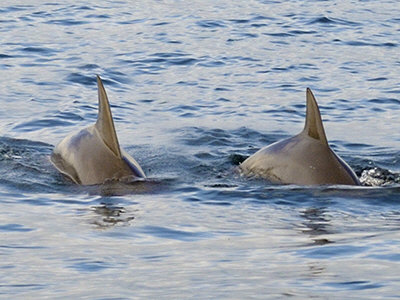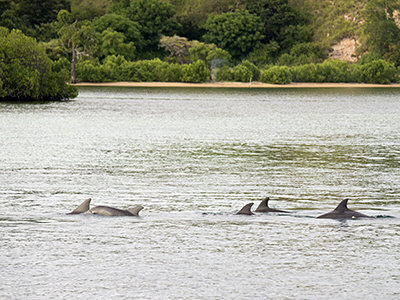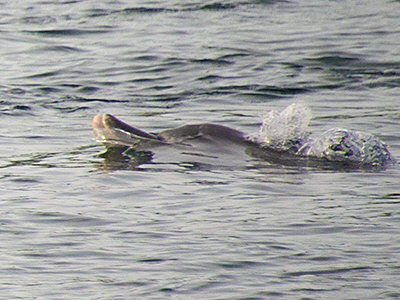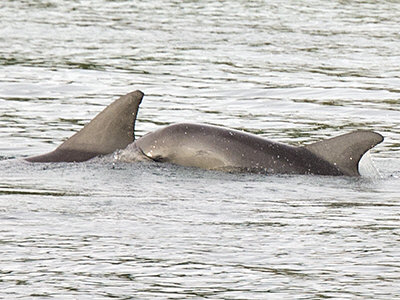
Fig 1

Fig 2

Fig 3

Fig 4
|
Order : CETARTIODACTYLA
Infraorder : Cetacea
Family : Delphinidae
Species : Tursiops aduncus
Total Length : up to 2.6m
Weight : Up to 230 kg
Females are slightly smaller than males.
The Indo-Pacific
Bottlenose Dolphin Tursiops aduncus was confirmed as a separate
species from the Common Bottlenose Dolphin Tursiops truncatus in
1998. It is the most likely of the three species in the genus Tursiops
to be encountered in the waters of Southeast Asia.
This species occurs in coastal waters of the Indian Ocean, along the coast
of mainland Asia, and amongst the islands of the Indo-malayan Archipelago as
far east as northern Australia and parts of the western Pacific Ocean.
Its skin colour is plain grey, somewhat darker dorsally and paler ventrally.
There are often darker spots along the lower flank and on the belly. The
dorsal fin is high, fairly straight along the anterior margin but strongly
curved along the posterior margin.
The beak is stout and relatively thick when compared with other dolphin
species. This species feeds predominantly on fish but will also take squid.
Groups of over 100 individuals are sometimes reported but typical pod
numbers are around 10 individuals or so.
Bottlenose dolphins are highly intelligent but, sadly, are frequently kept
captive in money-making oceanariums for human 'entertainment'.
Fig 1 : Dorsally the skin is
plain in colour, greyish under normal light but here is brownish in the late
afternoon sun.
Fig 2 : This pod off Pungu Island, Western Flores, Indonesia, comprised
eight individuals - a typical number for the species.
Fig 3 : Profile of the stout beak, with pinkish lips.
Fig 4 : The dorsal fin is large and strongly curved along the posterior
margin.
References :
Francis, C.M. 2019. A Field Guide to the Mammals of South-east Asia. Second
Edition. New Holland. 416 pp.
|